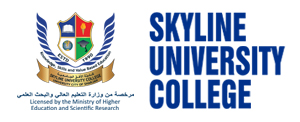In the private sector a statistician can become part of large multi-national companies. Banks and insurance companies need statisticans who have the knowledge of blending both maths and stats to create different financial models /products (eg. loans, investments etc.). Statisticians are also hired for varied roles, such as project development, reserch operations, commercial surveys and numerical analysis in share markets, stock markets etc.
Government organizations actively hire statisticians for various functions, such as assessing population demographics and characteristics, economic measurements and policy formulation. These organizations mostly include statistical and economic bureaus, and those related to socio-economic research. Other than this, banks, environmental, scientific and agricultural agencies also employ statisticians for similar type of work in their respective fields.
Statisticians also known as biostatisticians/biometricians are employed in hospitals, pharmaceutical companies or public health agencies. Their work includes designing studies to test whether drugs successfully treat diseases or conditions. They may also assist hospitals or public health agencies in identifying the origins of outbreaks of illnesses in humans and animals.
A prime avenue for statistics graduates is the education sector. They can work as full-time or guest lecturers at universities and colleges. They may also teach in schools to higher secondary class students.
A large number of mathematicians end up in research roles. The indispensability of mathematics demands the employment of mathematicians in various research organizations to solve complex problems. They are even engaged by aeronautical research agencies such as Indian Space Research Organisation (ISRO) and National Aeronautic Limited (NAL).
| Stream | Graduation | After Graduation | After Post Graduation | |
|---|---|---|---|---|
Path 1 | Clear Class XII in Any Stream with Maths | Pursue B.A./B.Sc in Statistics/ B.Stats/ Applied Statistics for 3-4 years | Pursue M. A./ M.Sc in Statistics /MStats for 2 years | Pursue Ph.D for 3-5 years |
Path 2 | Clear Class XII in Science with Maths | Pursue Integrated Program in M.Sc. Statistics for 5 years | – | Pursue Ph.D for 3-5 years |
[/td_block_text_with_title][td_block_text_with_title custom_title=”WORK DESCRIPTION” header_color=”#dd3333″ separator=”” tdc_css=””]Statistician’s job is to plan and conduct the trials and inspections, and deal with the first collection of data. They operate and examine the data in various situations, finding patterns to help draw conclusions.
Typical work activities include
[/td_block_text_with_title]

[formcraft id=’72’]